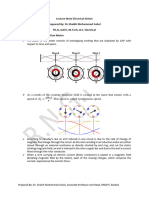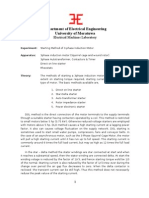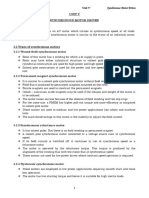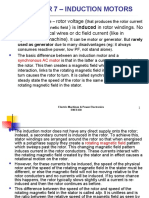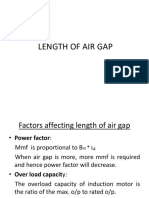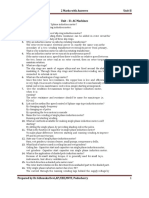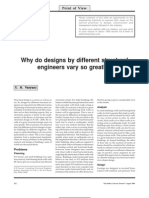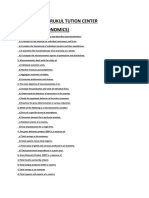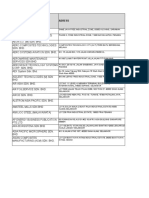100% found this document useful (1 vote)
2K views2 pages3 Point Starter
The three point starter is used to limit the high starting current in DC motors by gradually cutting off the starting resistance in series with the armature as the motor gathers speed. It works by connecting points on a variable resistance to studs on the starter handle, which connects the field winding through a no voltage coil and limits the armature current by adding resistance. As the handle is moved, more resistance is cut out until the motor runs at normal speed with all resistance eliminated in the run position. The no voltage coil holds the handle in run unless power fails. However, three point starters have a drawback for motors with variable speed as the weak field could cause the handle to release during operation.
Uploaded by
Akash ACopyright
© © All Rights Reserved
We take content rights seriously. If you suspect this is your content, claim it here.
Available Formats
Download as PDF, TXT or read online on Scribd
100% found this document useful (1 vote)
2K views2 pages3 Point Starter
The three point starter is used to limit the high starting current in DC motors by gradually cutting off the starting resistance in series with the armature as the motor gathers speed. It works by connecting points on a variable resistance to studs on the starter handle, which connects the field winding through a no voltage coil and limits the armature current by adding resistance. As the handle is moved, more resistance is cut out until the motor runs at normal speed with all resistance eliminated in the run position. The no voltage coil holds the handle in run unless power fails. However, three point starters have a drawback for motors with variable speed as the weak field could cause the handle to release during operation.
Uploaded by
Akash ACopyright
© © All Rights Reserved
We take content rights seriously. If you suspect this is your content, claim it here.
Available Formats
Download as PDF, TXT or read online on Scribd
/ 2










